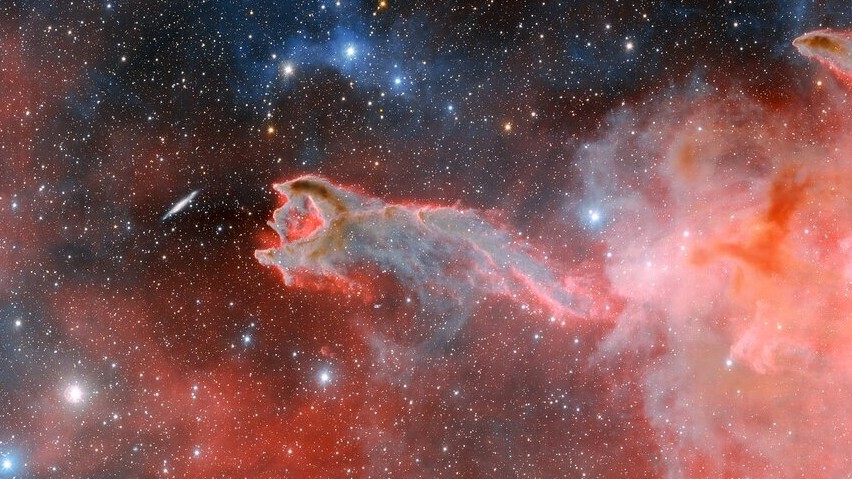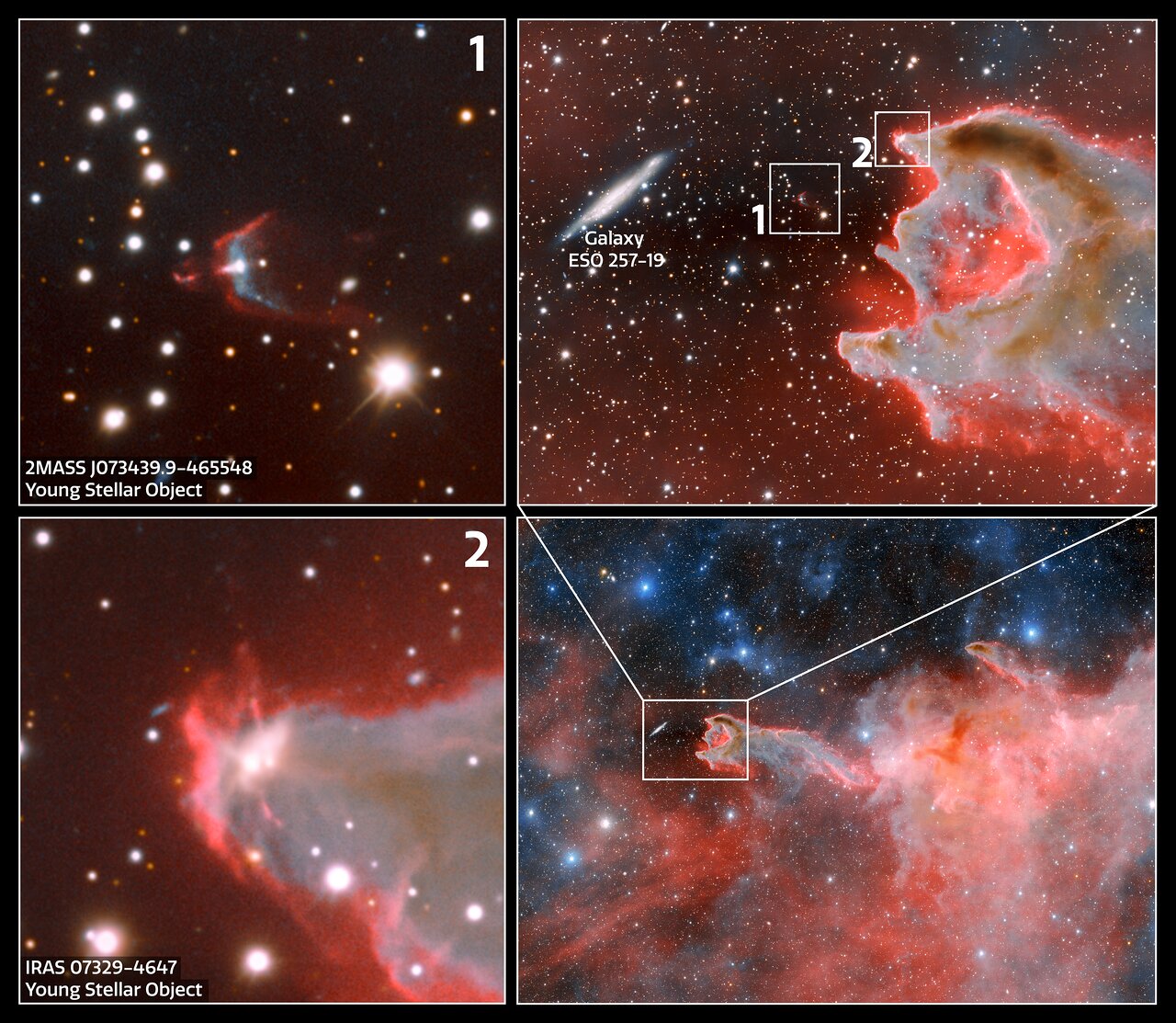Space photo of the week: 'God's Hand' leaves astronomers scratching their heads
A new space photo captures "God's Hand", a cometary globule in the Gum Nebula, where stars are being born.

What it is: CG 4, a "cometary globule" often called "God's Hand"
Where it is: Gum Nebula, 1,300 light-years away in the constellation Puppis (the "poop deck")
When it was shared: May 6, 2024
Why it's so special: CG 4 is a fairly typical cloud of gas and dust where stars are being born, but its strange shape has earned it two odd names. Described as a "cometary globule" because of its faint tail's resemblance to a comet, it's also called "God's Hand" for its likeness to a massive outstretched arm reaching across the cosmos.
In this new image from the Dark Energy Camera (DECam) on the Blanco Telescope in Chile, CG 4's dusty head and long tail resemble a mouth about to eat a side-on galaxy called ESO 257-19. It's a chance alignment because the galaxy is over 100 million light-years beyond. A zoomable close-up image shows CG 4's head and tail and two young stars being born.
How cometary globules form is a mystery. Some astronomers theorize that they're shaped by stellar winds from massive hot stars nearby. Others suggest that these structures may be spherical nebulas that deform after being impacted by a nearby supernova — a star that exploded.
Related: James Webb telescope reveals fiery 'mane' of the Horsehead Nebula in spectacular new images
Get the world’s most fascinating discoveries delivered straight to your inbox.

CG 4 could itself be the expanding remains of a supernova from about a million years ago. Cometary globules are not rare in the Milky Way, but the Gum Nebula is home to at least 32, according to the National Science Foundation's NOIRLab. The Gum Nebula is an emission nebula — a cloud of hot gas energized by a nearby star.
Although the Gum Nebula is a large structure, it's very faint. Scientists used DECam's special Hydrogen-alpha filter to image CG 4. Hydrogen becomes ionized when struck by radiation from stars, enabling DECam to image a faint red glow within CG 4's head and around its outer rim.
Managed by NOIRLab, DECam is a 570-megapixel camera with 74 sensors. It sits on the Víctor M. Blanco Telescope, a 4-meter telescope at the Cerro Tololo Inter-American Observatory on Cerro Pachon in Chile.

Jamie Carter is a freelance journalist and regular Live Science contributor based in Cardiff, U.K. He is the author of A Stargazing Program For Beginners and lectures on astronomy and the natural world. Jamie regularly writes for Space.com, TechRadar.com, Forbes Science, BBC Wildlife magazine and Scientific American, and many others. He edits WhenIsTheNextEclipse.com.


